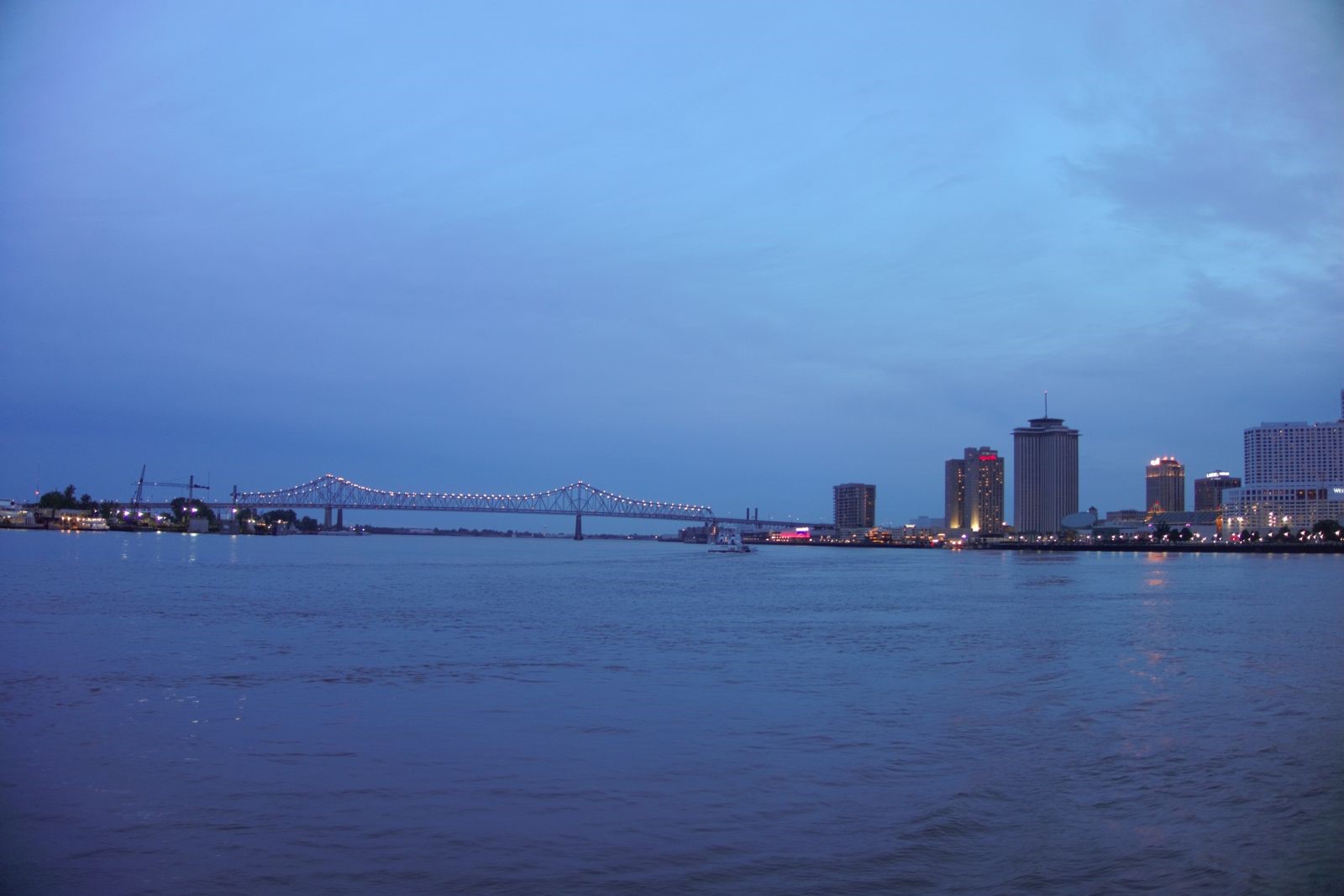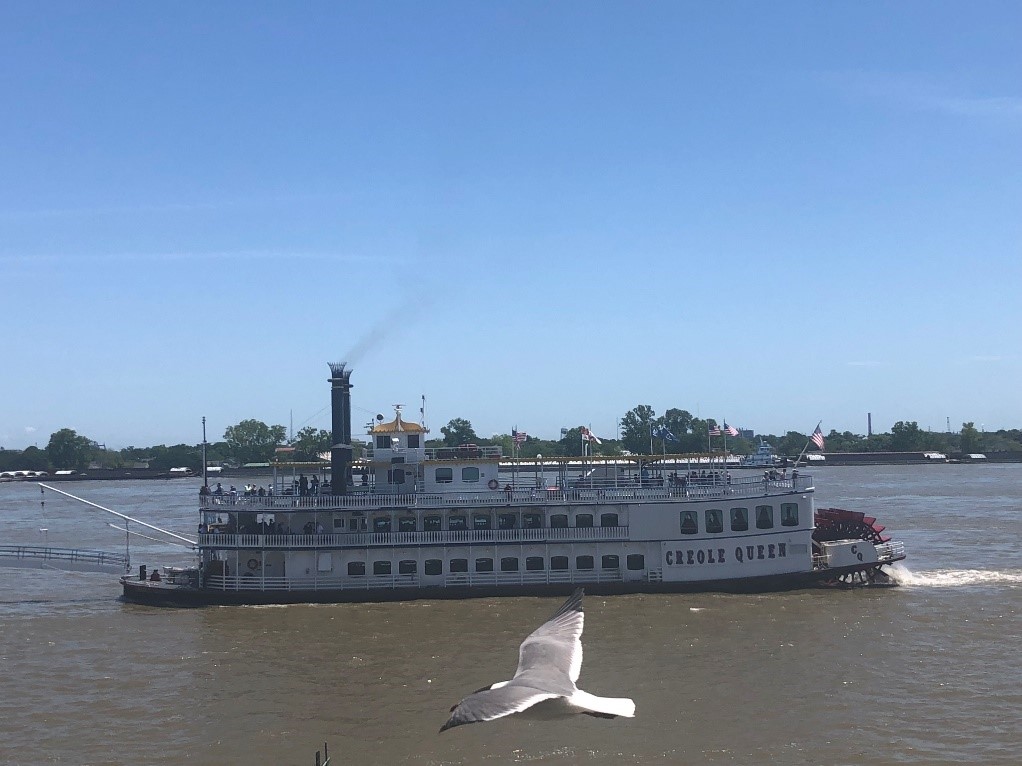How Mighty is the Missisissippi River?

The Mississippi River is a symbol of American history, progress and culture and here at the Paddlewheeler Creole Queen we are amazed by its strength and beauty every day. It is known as one of the world’s major river systems in biological productivity, habitat diversity, and size. In honor of the mighty waterway that our vessel paddles through daily, we’ve highlighted some of the most interesting aspects of the Mighty Mississippi. Come aboard our Historical Cruise to learn more interesting facts and history of one of the world’s greatest rivers.
Mississippi River Facts
Size – The exact length of the Mississippi River varies according to the source considering the channel continuously changes over time. The length of a river may increase or decrease as deposition or erosion occurs, meaning different lengths have been reported depending on the measurement method and the time of year. Sources found that the river is between 2,300 and 2,552 miles long. In some spots like at Lake Itasca, the river is only between 20 and 30 feet wide. The widest part of the Mississippi can be found at Lake Winnibigoshish near Bena, MN, where it is approximately 11 miles wide. The Mississippi River’s depth also differs depending on its location. At its headwaters, or furthest spot from its estuary with other rivers, is less than three feet deep. The Mississippi is deepest right here in New Orleans, near where the Creole Queen loads, between the Governor Nicholls wharf and Algiers Point, where it is 200 feet deep.
.jpg)
Path– The Mississippi either flows through or borders 10 states including Minnesota, Wisconsin, Iowa, Illinois, Missouri, Kentucky, Tennessee, Arkansas, Mississippi and Louisiana. There are 18 major river basins in the 48 states of the US, but much of the map is dominated by the massive catchment area for the Mississippi River, including the Upper and Lower Mississippi River Basins, along with Missouri River Basin and the Arkansas-White-Red Basin. The speed of the river changes as the water levels rise or fall and where the river widens, narrows, or becomes less shallow. The average speed of the Mississippi River is about 1.2 miles per hour, but here in New Orleans the river flows about three miles per hour. Water that leaves the river’s source at Lake Itasca takes about three months for water to reach the Gulf of Mexico.
Volume – Though like the length, width and depth of the Mississippi River, the volume varies by location, the average flow rate at New Orleans is 600,000 cubic feet per second. The Mississippi River discharges about 16,792 cubic meters of water per second into the Gulf of Mexico.

Commerce- Agriculture has been the dominant use of the Mississippi basin for nearly 200 years and has altered the hydrologic cycle and energy of the region. Sixty percent of all grain exported from the United States is shipped via the Mississippi River through the Port of South Louisiana and the Port of New Orleans. The Port of South Louisiana is one of the largest ports in the United States according to the Port of New Orleans. With over 500 million tons of shipped goods per year, this port is significant to national trade.

Wildlife- More than 260 species of fish, about 25% of all fish species, live in the Mississippi River and 60% of all North American birds call the Mississippi River basin their migratory flyway. It also houses about 145 species of amphibians and 50 species of mammals within its banks.

Mississippi River Culture
Songs – The Mississippi River conjures sounds of Dixieland Jazz, blues and Americana music. In New Orleans, famous musicians like Louis Armstrong made their living performing on a riverboat just like the Paddlewheeler Creole Queen. It’s no surprise that there have been many songs written about or inspired by the Mighty Mississippi by such artists as Sam Cooke, Johnny Cash, Loretta Lynn, Conway Twitty, Train, and Tina Turner.
Native American history – Long before Europeans discovered the Mississippi River, Native Americans lived along its banks since at least the 4th millennium BC. Those tribes included Choctaw, Chickasaw, Quapaw, Osage, Caddo, Natchez, Tunica, Sioux, SacGox, Pottawatomie, Illini, Menominee and Winnebago. The Native Americans lived off the river, using it for transportation, drinking water and food. The first record of a European reaching the Mississippi was Hernando de Soto in 1541.
Huck Finn – There have been many books that employ the Mississippi River as a symbol or secondary character, arguably the most famous being the Adventures of Huckleberry Finn by Mark Twain whose affinity for the river is well-known. In Huckleberry Finn, the river means freedom and a new life for the main characters, as well as challenges and responsibilities that freedom comes with.
Explore this inspirational waterway with us on a Paddlewheeler Creole Queen cruise down the Mississippi!
June 14, 2019 | Author: Rachel Tumminello











